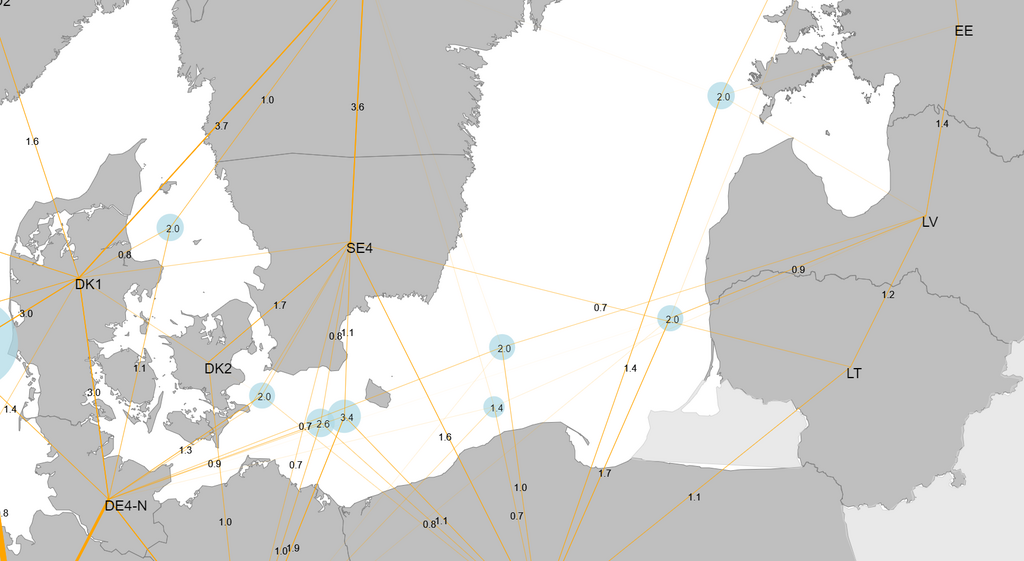
About BaltHub
With integrated energy system analysis covering the Baltic-Nordic region and beyond, BaltHub analyses the cost-effectiveness of Baltic Sea energy hubs. Such hubs have large amounts of offshore wind power connected…
With integrated energy system analysis covering the Baltic-Nordic region and beyond, BaltHub analyses the cost-effectiveness of Baltic Sea energy hubs. Such hubs have large amounts of offshore wind power connected far in the sea where wind speeds are high. The hubs can also be used to interconnect the onshore energy systems of the Baltic Sea countries, allowing efficient flow of energy and a more interconnected overall energy system.

In addition to providing clean energy to cover the current electricity consumption, offshore energy hubs can provide for the expected increase in demand towards 2050 due to sector coupling. The increase is driven by electrification of the heating and transport sectors. In addition to electric vehicles, hydrogen production for ships, aviation and heavy vehicles using electrolysers adds to future electricity consumption.
The impacts of key parameters, such as CO2 tax, hydrogen demand and possible limits on onshore wind buildout, on the offshore hubs’ cost-effectiveness are investigated via scenario and sensitivity analyses. Both producing hydrogen at the hubs or onshore are considered. The results help decision makers in identifying the key parameters affecting offshore hub buildout and related CO2 reductions in the Baltic Sea region.
The impacts of large-scale wake losses, caused by having large amounts of offshore wind installed in a limited geographical area, on the offshore hub buildout are analysed. The benefits of interconnecting the Baltic Sea region’s countries via the offshore hubs are investigated by comparing connecting each hub to only one country to optimally interconnecting all hubs. This comparison helps the Baltic-Nordic region to see the value of allowing strong interconnections between the hubs, which may need regulatory alignment, in the Baltic Sea.
Future Baltic-Nordic hubs and interconnections will likely be realised in a stepwise manner with investment decisions being made with uncertainties about the future. The project addresses this aspect and will apply methods to identify investment options that are optimal for a range of likely scenarios, supporting decisions that are economically robust with low risk of stranded assets. The project will also assess the impact on onshore power systems and related reinforcement needs with different Baltic Sea interconnection scenarios.

